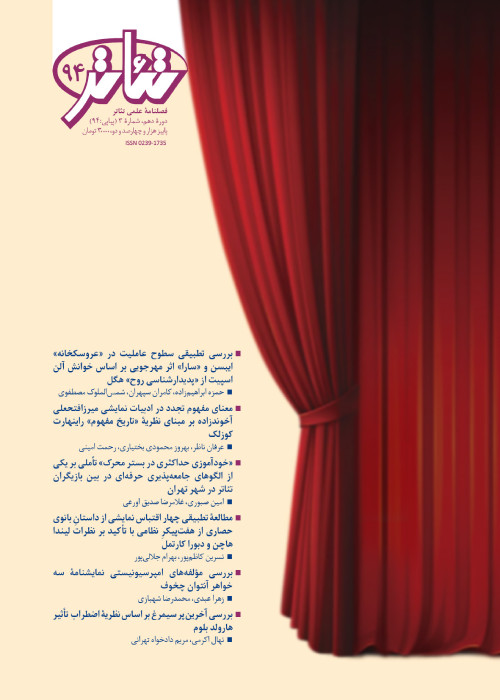Hermeneutic Color-Blindness and the Shadow-Writing of Power: An Exploration of the Question of Hermeneutics in Howard Barker's Scenes from an Execution
Author(s):
Abstract:
This essay seeks to approach and explore Scenes from an Execution (1985, SFE) - the third play in Howard Barkers 1980s trilogy also including No End of Blame and Pity in History. The trilogy primarily concerns itself with the problematic and critical nature and function of art in a given historical era or discursive norms and relations in conjunction with the ethical, existential, and aesthetic vicissitudes the artist undergoes in his/her encounter with historical cataclysms and socio-political restrictions. What distinguishes SFE from the other two plays, however, is that it has a female artist as its protagonist; a characteristic which in turn ushers in the problematics concomitant with the question of gender (including discursive strategies, such as the hysterization of the female subject, and phallocentric values and normalizing binarisms (reason-passion (madness), unity-multiplicity/fluidity, normality-abnormality, rule/restraint- excess/ transgression) which aim to un/mis-represent and subject the female. Equally crucial is the problem of the representation of the event coupled with the questions of (self-)knowledge, perspectivalism, and the problem of meaning in general, and the meaning of the artwork in particular. The aforementioned issues constitute the focal points of SFE, around which the tensions between the artist and the State of Venice revolve too. Indeed, one of the pivotal problems, which poses a formidable challenge to Galactia, is how to reconcile personal preoccupation and ethical commitment (to personally-perceived truth) with state commission and discursively sanctioned truth. On this premise, it is my argument that the question of hermeneutics constitutes the crux of the play. Hermeneutics, as this essay shall seek to demonstrate, concerns self-knowledge, the possibility of unified or multiple meaning(s), epistemological implications of aesthetic style, and the ethics of representation. Accordingly, exploring the foregoing issues in the light afforded by various hermeneutic theories (including those of Gadamer, Habermas and Ricoeur, among others) shall help us unfold and understand some of the complications concerning the issues of art, selfhood, meaning and truth in this play.
Keywords:
Language:
Persian
Published:
Theater, Volume:4 Issue: 68, 2017
Page:
113
magiran.com/p1813128
دانلود و مطالعه متن این مقاله با یکی از روشهای زیر امکان پذیر است:
اشتراک شخصی
با عضویت و پرداخت آنلاین حق اشتراک یکساله به مبلغ 1,390,000ريال میتوانید 70 عنوان مطلب دانلود کنید!
اشتراک سازمانی
به کتابخانه دانشگاه یا محل کار خود پیشنهاد کنید تا اشتراک سازمانی این پایگاه را برای دسترسی نامحدود همه کاربران به متن مطالب تهیه نمایند!
توجه!
- حق عضویت دریافتی صرف حمایت از نشریات عضو و نگهداری، تکمیل و توسعه مگیران میشود.
- پرداخت حق اشتراک و دانلود مقالات اجازه بازنشر آن در سایر رسانههای چاپی و دیجیتال را به کاربر نمیدهد.
In order to view content subscription is required
Personal subscription
Subscribe magiran.com for 70 € euros via PayPal and download 70 articles during a year.
Organization subscription
Please contact us to subscribe your university or library for unlimited access!


